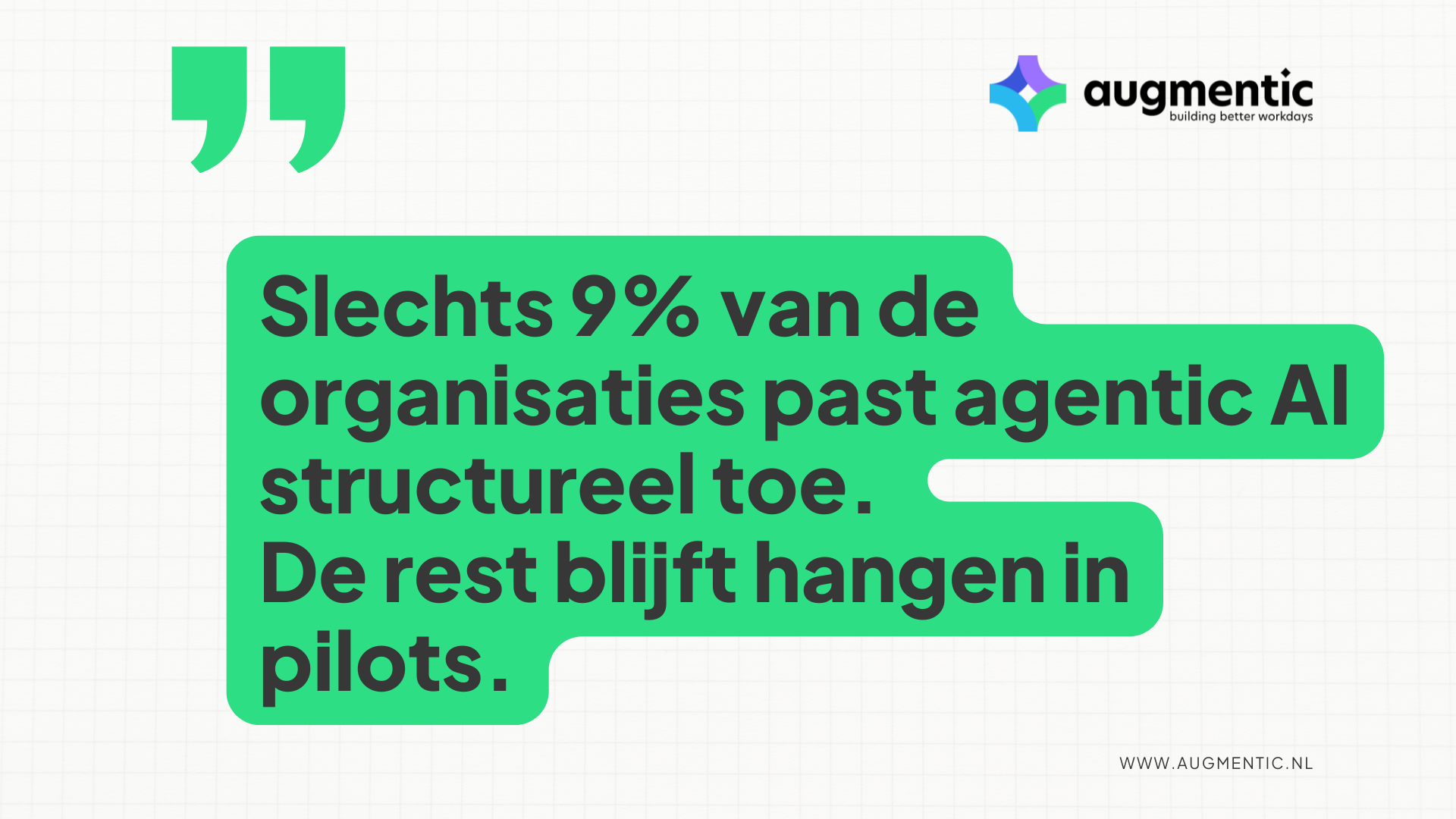Augmentic BV
Haaswijkweg east 12B
3319 GC Dordrecht
The Netherlands
Augmentic BV
Haaswijkweg east 12B
3319 GC Dordrecht
The Netherlands

The ISG report on Agentic AI in 2025 shows a gap between promise and practice. Only 9% are using agents structurally, while the rest are experimenting. The technology is there, but collaboration, frameworks and trust are lacking. Success requires work redesign, clear roles and human-centered adoption.

Agentic AI promises fundamentally different work: software that makes its own decisions, organizes itself and performs work processes autonomously. But where does this technology really stand? The ISG State of the Agentic AI Market Report 2025 shows an interesting paradox. Organizations are experimenting abundantly with agents, but structural adoption lags. There is potential, certainly, but practice forces a rethink. What is already working? What blocks scaling up? And what does this require from technology and people?
The ISG State of the Agentic AI Market Report 2025 paints a picture that is both hopeful and confrontational. Organizations are experimenting with agentic AI on a large scale, but only a fraction actually succeed in applying this technology structurally.
The promise of agents performing autonomous work is alive and well, but the road to mature adoption is proving recalcitrant. Agents function mostly behind the scenes - in IT processes, financial systems and DevOps - and are rarely visible in customer-facing or strategic domains.
The barriers are rarely technical: They involve trust, collaboration, governance and clarity of roles. While technology is delivering on its promise in small steps, organizations are struggling primarily with organizational embedding. The human-agent relationship turns out to be more complex than thought, especially if autonomy is not to remain an empty promise. The report therefore calls for reflection: not only what can be done with agentic AI, but especially - how do we make it work in practice?
The ISG report paints a nuanced picture with hard data:
Together, these observations make clear: agentic AI is already technically mature, but organizationally still young.
The ISG report provides clear messages for those who want to go beyond experimentation:
These steps make it clear that the adoption of agentic AI is much broader than technology alone. People live, work and decide with it.
The report makes clear: agentic AI will not come into its own without a fundamental overhaul of how we organize work. Technology alone is not enough. It's about shaping human-agent collaboration - including clear roles, oversight, and room for autonomy. This touches on a key point in how Augmentic looks at the future of work: agents are not replacements, but colleagues with digital responsibilities. If we approach agents as full-fledged team members, we can make work smarter, more consistent, and more people-centric.
The report emphasizes that agentic AI becomes successful only when humans and technology work together in a new way. It requires not only tools, but also clear frameworks, shared responsibilities and mutual trust. An agent is not a replacement for humans, but a colleague with its own rules of the game.
The move to agentic AI does not have to be a complicated journey. Three concrete actions to start now:
Would you like to spar, deepen or just check if you are on the right track? Augmentic likes to think with you - without fuss, but with a plan.
Source: ISG State of the Agentic AI Market Report 2025 by ISG AI Advisory (Loren Absher & Olga Kupriyanova), published June 2025: ISG Report 2025